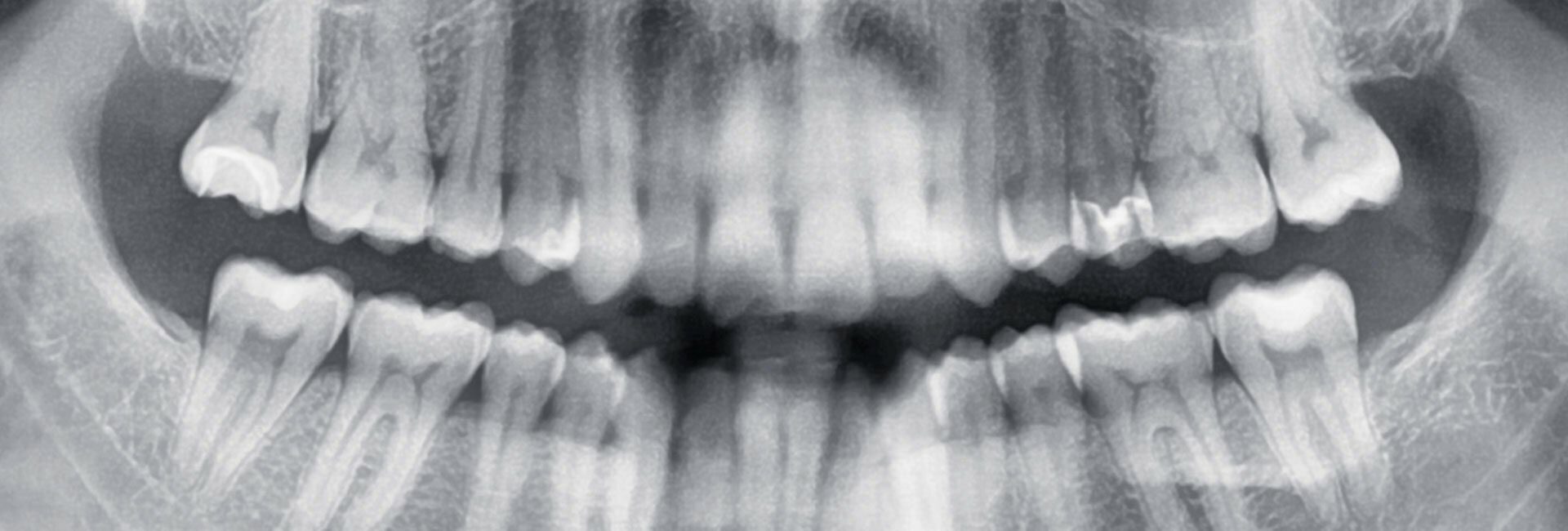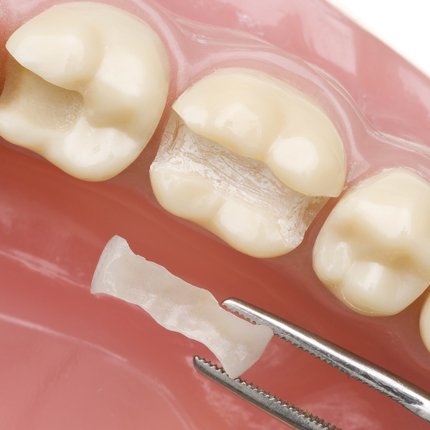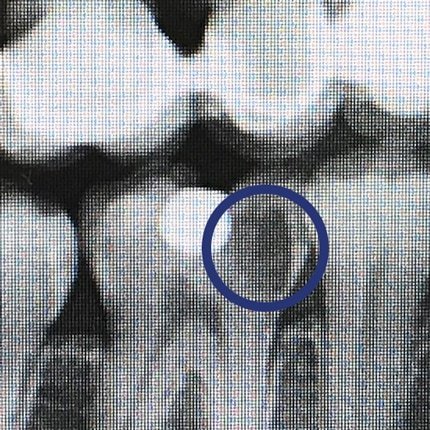
The tooth and dental caries
What do we see when someone gives us a smile? A pair of friendly eyes and a set of bright, beautiful teeth. This bright colour is made even more beautiful due to a pearly-white shimmering effect, produced by the slightly transparent enamel on the tooth surface. It turns out the hardest substance in the human body is also the most beautiful one.
As dentists, we love this natural substance and do our best to protect it, and put a lot of effort into trying to ensure that dental repairs, when required, attain this same level of unparalleled beauty.

Everything about the topic of caries
But how does the dreaded dental disease caries develop? And what can you do to prevent it? We answer all your questions about caries in the following article. Here you can also read about the consequences of untreated caries and how the treatment at DR. HAGER | dentists in Bietingen and Constance.
How caries come about
Unfortunately, due to the great stresses that the teeth in the mouth are placed under, they sometimes get damaged. For example, the disease (dental caries) mainly forms due to an unbalanced diet and inadequate dental care. The cause of the disease is an acid-producing dental plaque. In this tough layer, the bacteria can lie undisturbed on the enamel surface. A regular intake of sugary foods and drinks supplies this white build-up of plaque with short-chain carbohydrates. These are used by bacteria (for the most part, Streptococcus mutans) in order to produce acids. This process leads to the formation of a hole, quite literally, in the healthy tooth structure.
When these deposits on the teeth are removed from the tooth surface by cleaning the teeth, an incredible repair system found in the saliva goes about independently repairing the holes in teeth formed due to this acid. This process is called remineralisation and is extremely effective at healing any dental caries that have formed. If the healing minerals are constantly flushed away, however, the healing process cannot take place. This is also the reason for dental caries in young children: due to constant bottle feeding, the healing layer of minerals is constantly washed away. That explains why even drinking pure water from these bottles can cause caries in these children.
Detecting caries (tooth decay)
How caries are detected has changed significantly over the years: in the past, a metal instrument was used to probe areas of the teeth suspected of caries for softened areas. Nowadays, caries are detected using visual inspection with a good light source, using indirect exposure of teeth to a source of “cold light”, and above all, using specialist dental x-ray imaging: bite-wing imaging.
This allows for teeth affected by hidden carries to be identified. Fluorescent light sources and staining with dyes may additionally be used by the dentist to detect caries.
The consequences of dental caries
When the bacteria that cause dental caries are able to build up their destructive sites on teeth over longer periods of time, these caries can no longer be repaired. This is where actual holes start to form in the tooth enamel, which dentists can recognise on a case-by-case basis using various different methods to form a diagnosis. This is when a treatment for dental caries is carried out, involving the removal of areas of decay, and replacing these areas with a filling. Fear not! This procedure is pain-free as a local anaesthetic is applied before starting. Once the bacteria are removed by drilling using special drill bits, the tooth nerves can normally be saved.
In some cases, however, where the decay-causing bacteria are left undisturbed on the tooth for a long period of time without any treatment, they not only destroy tooth enamel, but also the underlying fine structures of the dentine. Dentine is found in teeth directly below the hard enamel layer and is the last substance in the tooth before reaching the nerve (what dentists refer to as the “pulp”). Dentine is a lot softer than enamel and has a porous structure that can be corroded away rapidly by bacteria. Dental decay reaching deep down into the dentine goes on to infect the dental nerve, with patients being completely unaware. Long before any pain appears, the body’s defences fight against the bacterial intruders in the dental nerve.
Only after a month-long assault by the damaging bacteria, with no dental treatment to save the tooth, will the dental nerve final die. A feeling of pressure and pain are then the typical symptoms at this advanced stage of the disease. Wide-ranging, and sometimes dramatic consequences may result for the patient’s health at this point, and urgent curative treatment is required by a dentist.
Tooth decay is feared most due to the tooth ache associated with it. When the dental nerve dies, strong inflammation reactions may be caused in the infected tissue by the bacteria, which is often painful. Unfortunately, many people fear going to the dentist when they start feeling tooth ache, which prevents the caries from being identified, means the caries is not contained, and leads to the associated after-effects being magnified. A few words to make you feel better: all of our treatments are carried out using a highly-effective and protective anaesthetic (numbing agent), as well as laughing gas being available. Effective pain-relief can be provided in this way.

Treating tooth decay (dental caries)
As described earlier, the body has the ability to cure itself of superficial holes in a natural way. This process can be supported by fluoride treatments given by the dentist. Fluoride promotes tooth repair where caries exist and makes the affected tooth enamel more resistant to acids: it results in a harder tooth structure.
This result also explains how patients can effectively prevent tooth decay (caries formation). Regular brushing and cleaning must be carried out to ensured that no bacterial layer can build up on the tooth surface for longer than 48 hours. In that case, a particularly dense network of bacteria would form on the tooth. This is termed “biofilm” (or dental plaque): a truly specialised biotope of a range of different bacteria that mutually support each other in their tooth-destroying labours. This tough biofilm also forms a barrier against the tooth-healing saliva. If this plaque is broken up just once per day by tooth brushing, then the damaging effects will not occur.
However, this brushing effect must effectively reach all tooth surfaces. For this reason, the right tools for the job, such as interdental brushes, as well as the correct brushing technique are required. Our team at Dr. Hager Dental Hygiene will be happy to show you how to maintain effective oral hygiene.
Our dental hygienists are always happy to give advice on how to prevent these damaging acids in the mouth. A central role here is played by patient diet. Food and drinks that can be quickly converted to sucrose should be avoided. That’s why diets with more wholemeal bread instead of white bread, mineral water instead of sugary drinks, and little snacking between meals help to keep the acid levels (pH value) neutral. As such, our goal is to achieve a regulated diet with breaks where food and drink is not consumed. Regular, professional tooth cleaning also helps to discover and eliminate any tartar build-up or plaque that could not be reached. For more information on this, please visit our preventative care section.
Preventing caries with the right dental hygiene
Dental hygiene relates to preventative care to stop caries: the beginnings of tooth decay can heal when very good dental hygiene is maintained. During hygienist appointments at the Dr. Hager Dental Practice, we will show you how to clean your teeth effectively and tell you which cleaning aids you should be using in your specific case in order to help prevent caries formation. We are also always happy to give advice on how you can avoid “hidden sugars” in your diet. An unbelievable amount of sugar is hidden in many different foods and drinks, as the sugar has the effect of stimulating an addiction to any given food or drink: the best example is the all-too-popular ketchup, with around 25% sugar content; even sausages contain 3% sugar. These types of sugar are predominantly the industrial sugar sucrose, produced from sugar beet. In that case, are other sugars any better? Unfortunately, the difference between sucrose and other sugars (including organic sources) is not very large in terms of the risk of tooth decay: caries and periodontal disease are rife amongst the sugar cane farmers in South America and Africa, despite the sugar they consume being a different sugar type chemically.
Only sugar substitutes such as sorbitol, xylitol and fructose have little damaging-causing effects on teeth (in terms of causing tooth decay). We all know someone who has kept every single one of their teeth into old age, despite a complete lack of care for their teeth and even eating poor diets. Knowing this can unnerve other people who take real care of their teeth. How can that be possible? Here we see how the genetic material we inherit plays a role: due to a different genetic make-up, teeth are equipped with tougher enamel. This difference in hardness can be felt by dentists when drilling teeth. These types of teeth are, however, not commonplace. These lucky few do, however, still have problems with their gums and can suffer from periodontal disease, loosing teeth in that way.



